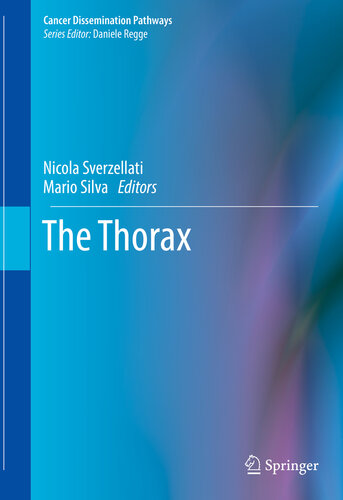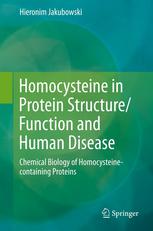پروتئازها در آپوپتوز: مسیرها، پروتکل ها و پیشرفت ترجمه ۲۰۱۵
Proteases in Apoptosis: Pathways, Protocols and Translational Advances 2015
دانلود کتاب پروتئازها در آپوپتوز: مسیرها، پروتکل ها و پیشرفت ترجمه ۲۰۱۵ (Proteases in Apoptosis: Pathways, Protocols and Translational Advances 2015) با لینک مستقیم و فرمت pdf (پی دی اف)
| نویسنده |
Kakoli Bose |
|---|
| تعداد صفحهها |
245 |
|---|---|
| نوع فایل |
|
| حجم |
5 Mb |
| سال انتشار |
2015 |
89,000 تومان
معرفی کتاب پروتئازها در آپوپتوز: مسیرها، پروتکل ها و پیشرفت ترجمه ۲۰۱۵
این کتاب یک نمای کلی از پروتئازهای دخیل در مرگ برنامه ریزی شده سلولی ارائه می دهد. بحث متمرکز و گسترده ای در مورد آنزیم های پروتئولیتیک مانند کاسپازها، HtrAs، گرانزیم ها، کالپین ها و کاتپسین ها و همچنین پروتکل های آزمایشگاهی مربوط به آنزیم ها و آپوپتوز ارائه می دهد. این کتاب همچنین سیستم های مدل موشی و تکنیک های تصویربرداری غیرتهاجمی را در بیماری های مرتبط با آپوپتوز مانند سرطان و تخریب عصبی بررسی می کند.
در حالی که پیچیدگی های آپوپتوز به آرامی در فصل اول آشکار می شود، سه فصل زیر به طور جداگانه طبقات مختلف پروتئازها را که نقش کلیدی در شروع، توسعه و اجرای آن ایفا می کنند، توضیح می دهد. مرگ برنامه ریزی شده سلولی دو فصل آخر این بحث را با توصیف روش های مختلف آزمایشگاهی و پیشرفت های درمانی مربوط به پروتئازهای آپوپتوز تکمیل می کنند. پروتکل هایی که مطالعات سینتیکی آنزیم مبتنی بر رنگ سنجی و فلورسانس و همچنین سنجش مرگ سلولی را نشان می دهند در فصل 5 توضیح داده شده اند. مدل های تصویربرداری پیش بالینی in vivo و غیر تهاجمی آپوپتوز برای درک پیچیدگی های پیشرفت بیماری و سهم آنها در درمان در فصل آخر ذکر شده است.
این کتاب موضوعات مرتبط با زیست شناسی پایه و کاربردی را پوشش می دهد. بنابراین برای دانشمندانی که در زمینه آپوپتوز کار می کنند و به طور کلی در مورد مکانیسم پروتئازها و آنزیم ها تحقیق می کنند، به همان اندازه جذاب و مفید خواهد بود. این پروتکل ها مطمئناً برای دانشجویان فارغ التحصیل و کارشناسی که در زمینه های مرتبط کار می کنند مفید خواهد بود و راهنمای مفیدی برای طراحی دارو برای زیست شناسان ترجمه ای درگیر در تحقیقات تخریب عصبی و سرطان ارائه می دهد.
This book provides a comprehensive overview of the proteases involved in programmed cell death. It presents a focused yet extensive discussion on proteolytic enzymes such as caspases, HtrAs, granzymes, calpains and cathepsins as well as laboratory protocols related to enzymology and apoptosis. Mouse model systems and non-invasive imaging techniques in apoptosis-related diseases such as cancer and neurodegeneration are also covered in this book.
While slowly unravelling the complexities of apoptosis in chapter one, the next three chapters individually elaborate on different classes of proteases that play key roles in the initiation, progression and execution of programmed cell death. The last two chapters complete this discussion by describing different laboratory methodologies and therapeutic advances involving apoptotic proteases. Protocols portraying in vitro and ex vivo colorimetric and fluorescence-based enzyme kinetic studies as well as cell death assays are explained in the fifth chapter. Preclinical in vivo models and non-invasive imaging in apoptosis to understand the complexities of disease progression and their contribution toward therapeutics is recounted in the last chapter.
The book spans topics related to both fundamental and applied biology. It would therefore be equally appealing and informative to scientists working in the field of apoptosis and those who are investigating mechanisms of proteases and enzymes in general. The protocols would certainly benefit both graduate and undergraduate students working in the related fields and provide useful leads for drug design to translational biologists involved in neurodegeneration and cancer research.















